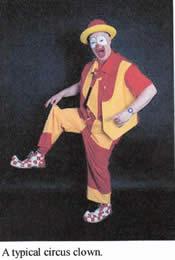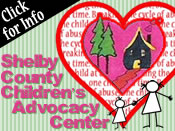 August 13, 2015 - I read some disturbing news the other day. I read that several recent national surveys reveal that clown performers now scare children more that they entertain them. I was shocked at this revelation.
August 13, 2015 - I read some disturbing news the other day. I read that several recent national surveys reveal that clown performers now scare children more that they entertain them. I was shocked at this revelation.
The people who are supposed to like clowns, children, apparently don’t. In 2008 a widely reported University of Sheffield, England survey of 250 children between the ages of four and 16 found that most of them disliked and even feared images of clowns. A child psychologist declared of the survey, “Very few children like clowns. They are unfamiliar and come from a different era. They don’t look funny; they just look odd to the kids.” Could this be true?
If you do a little research on the matter you will find a web site entitled “ihateclowns.com” dedicated to clown haters. One “I Hate Clowns” Face Book page has just under 480,000 “likes”, so there must be a lot of people out there who dislike these makeup-clad entertainers. If fact, there is now a word for the excessive fear of clowns: Coulrophobia.
Clowns, as pranksters, jesters, jokers, harlequins, and mythologized tricksters have been around for ages, at least from around 2500 B.C. In the United States, clowns have primarily been associated with the circus. He was a comic performer who employed slapstick or similar types of physical humor, often in a mime style.
The most recognizable clowns are those that commonly wear outlandish costumes featuring distinctive makeup, colorful wigs, exaggerated footwear, and colorful clothing. Their entertainment style is generally designed to entertain large audiences, especially at a distance.
The comedy that clowns perform is usually in the role of a fool whose everyday actions and tasks become extraordinary – and for whom the ridiculous becomes ordinary.
The first mainstream clown role was portrayed by Joseph Grimaldi in the early 1800s. He was the first to create and use the traditional whiteface make-up design with red paint to emphasize his mouth and nose, with black to expand his eyebrows. Grimaldi became so dominant on the London comic stage that clowns became known as “Joey”, and both the nickname and the whiteface make-up design were, and still are, used by other types of clowns.
America’s first great white-faced clown was stage-star George Fox. Following English Joseph Grimaldi, Fox popularized the Humpty Dumpty stories throughout the land in the first half of the 19th century in America. American sociologist, Peter Berger, wrote that “It seems plausible that folly and fools, like religion and magic, meet some deeply rooted needs in human society. For this reason, clowning is often considered an important part of training as a physical performance discipline, partly because tricky subject matter can be dealt with, but also because it requires a high level of risk and play in the performer.”
The most prevalent character clown in the American circus was the hobo, tramp, or bum, all played so well by Emmett Kelly, Red Skelton, and a host of others.
So, the question remains – why have clowns fallen into disfavor with not only children but many adults as well? Most clowns aren’t trying to be odd. They’re trying to be silly and sweet, fun personified. When did clowns become so dark and scary? The answer could be that in today’s dangerous society, parents have taught their youngsters to be wary of people who they don’t know, and who look “scary” to them. Or, perhaps, watching a clown perform requires people to look up and abandon their hand-held computers with “face book” or “twitter” for a while, and fear they might miss an important tweet or message. To them, watching a clown is just not that important a deal. Personally, I hate to see them go. I think that from time to time, all of us have played the clown part unintentionally at least once, and we can sympathize with them.









